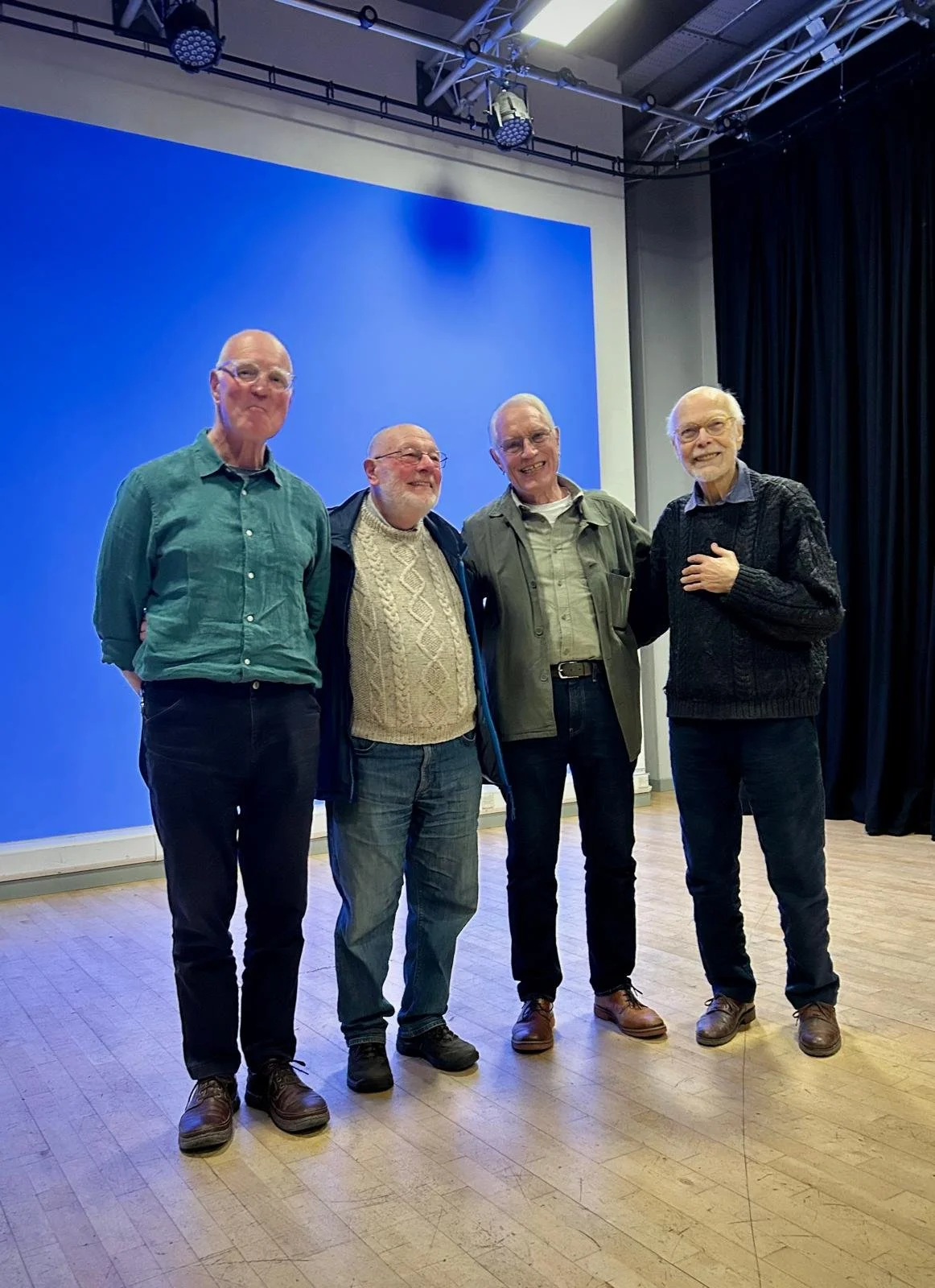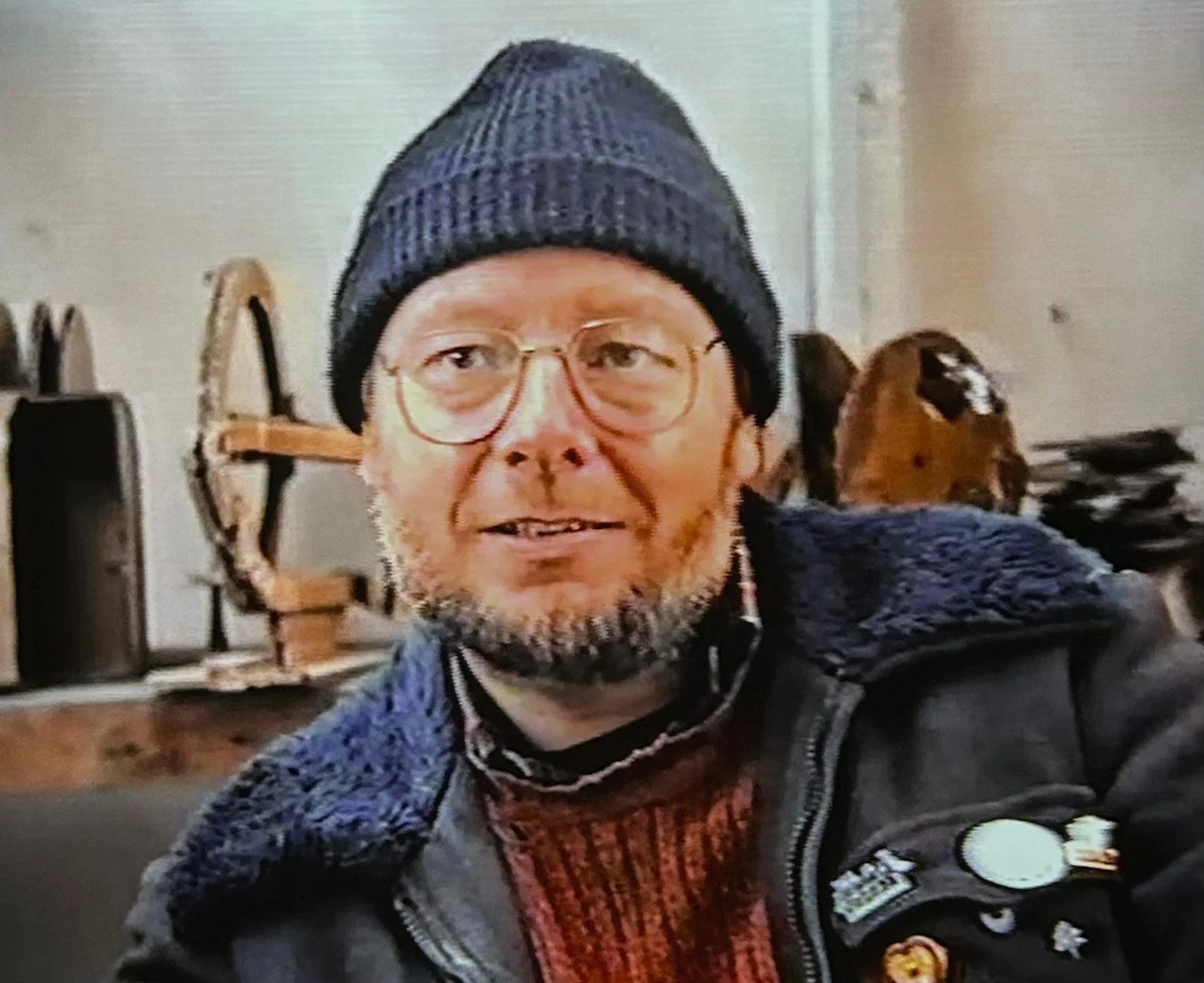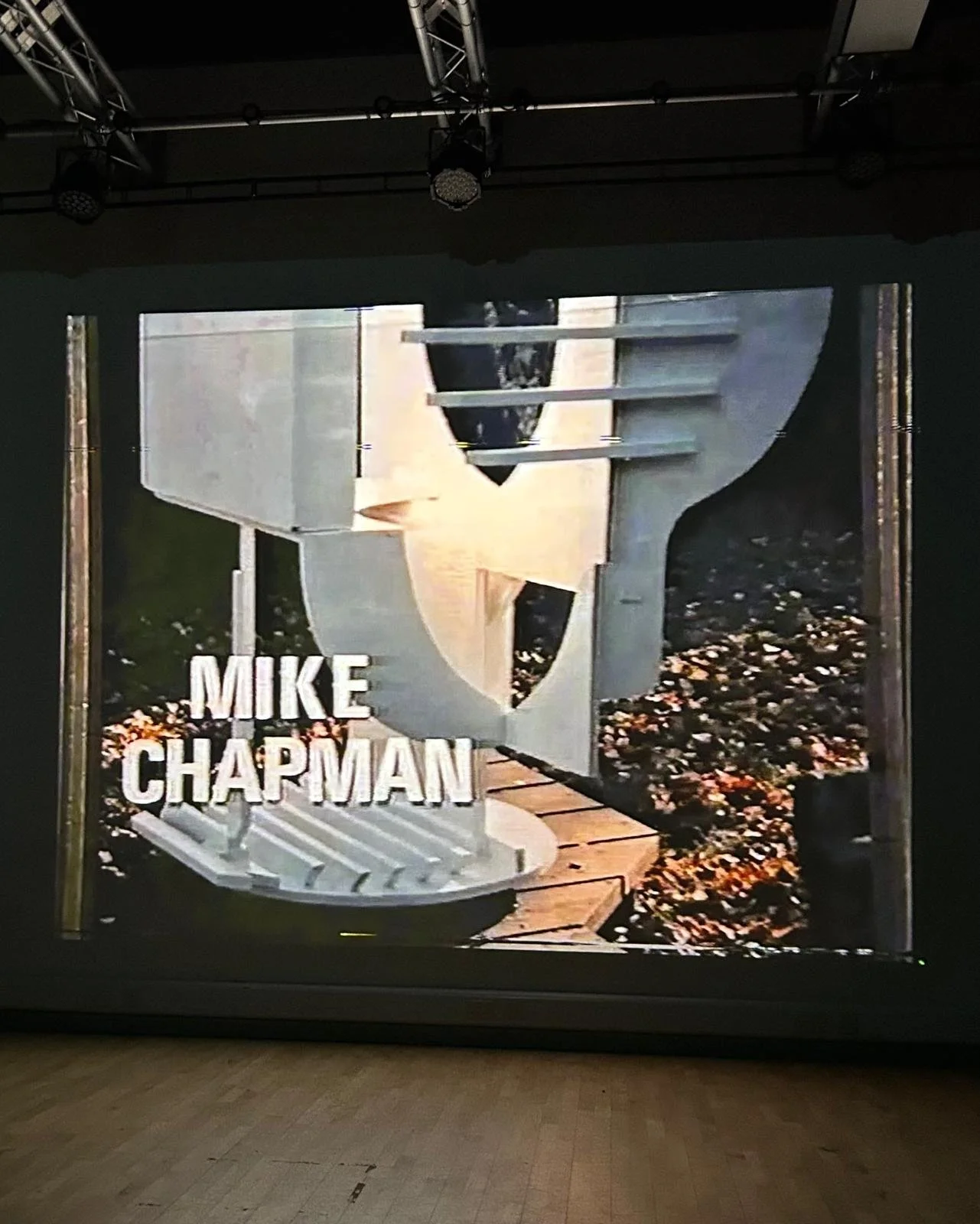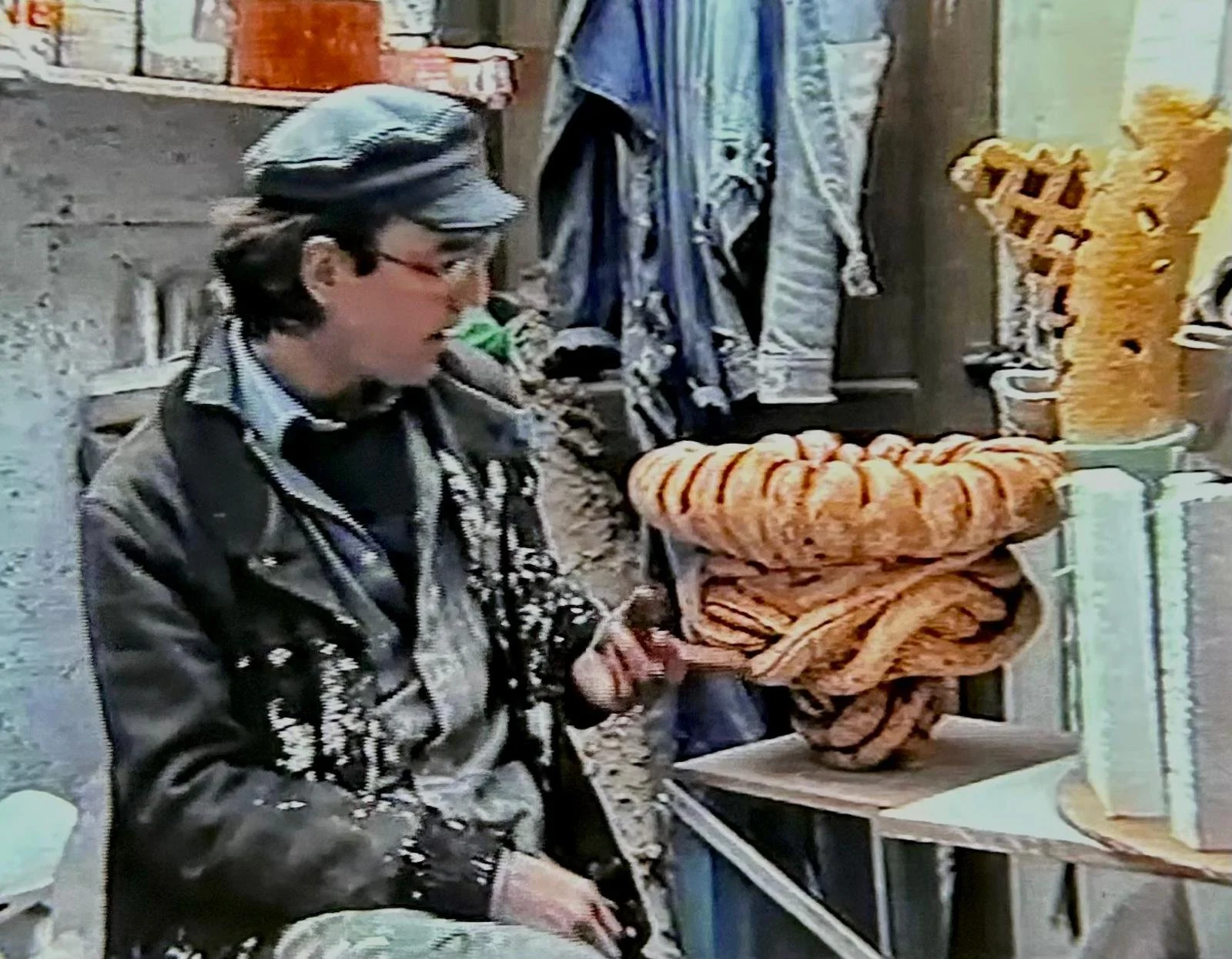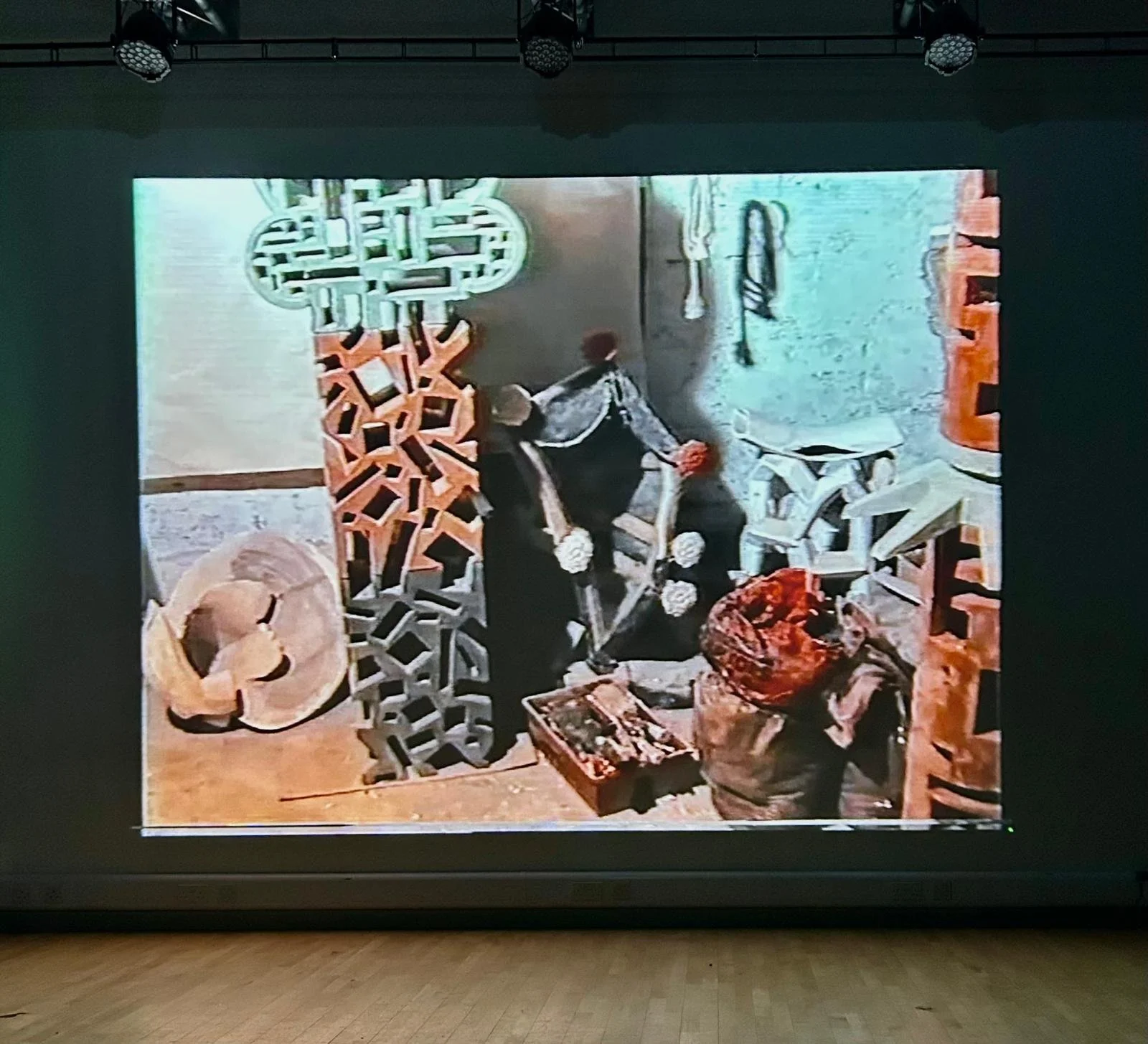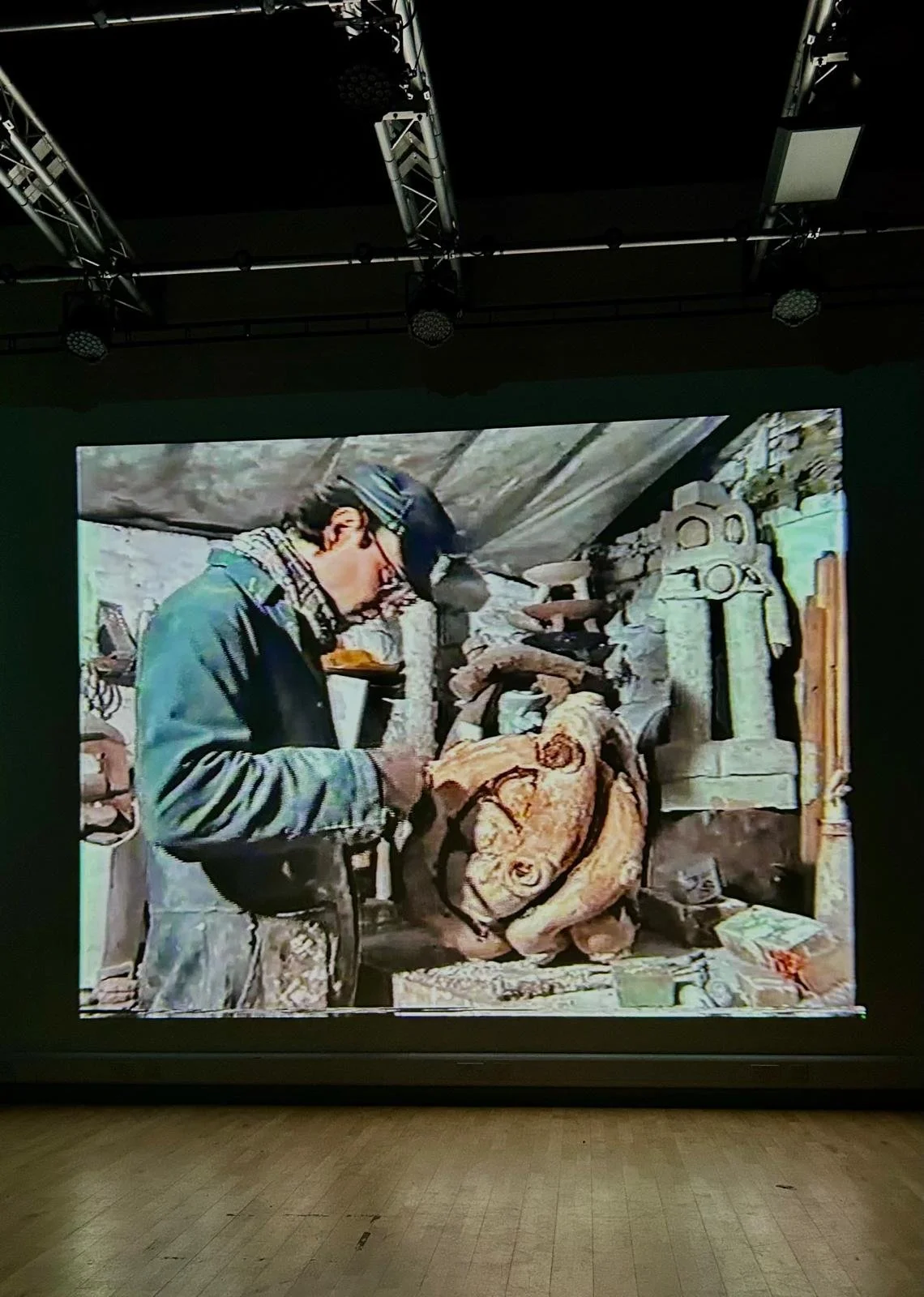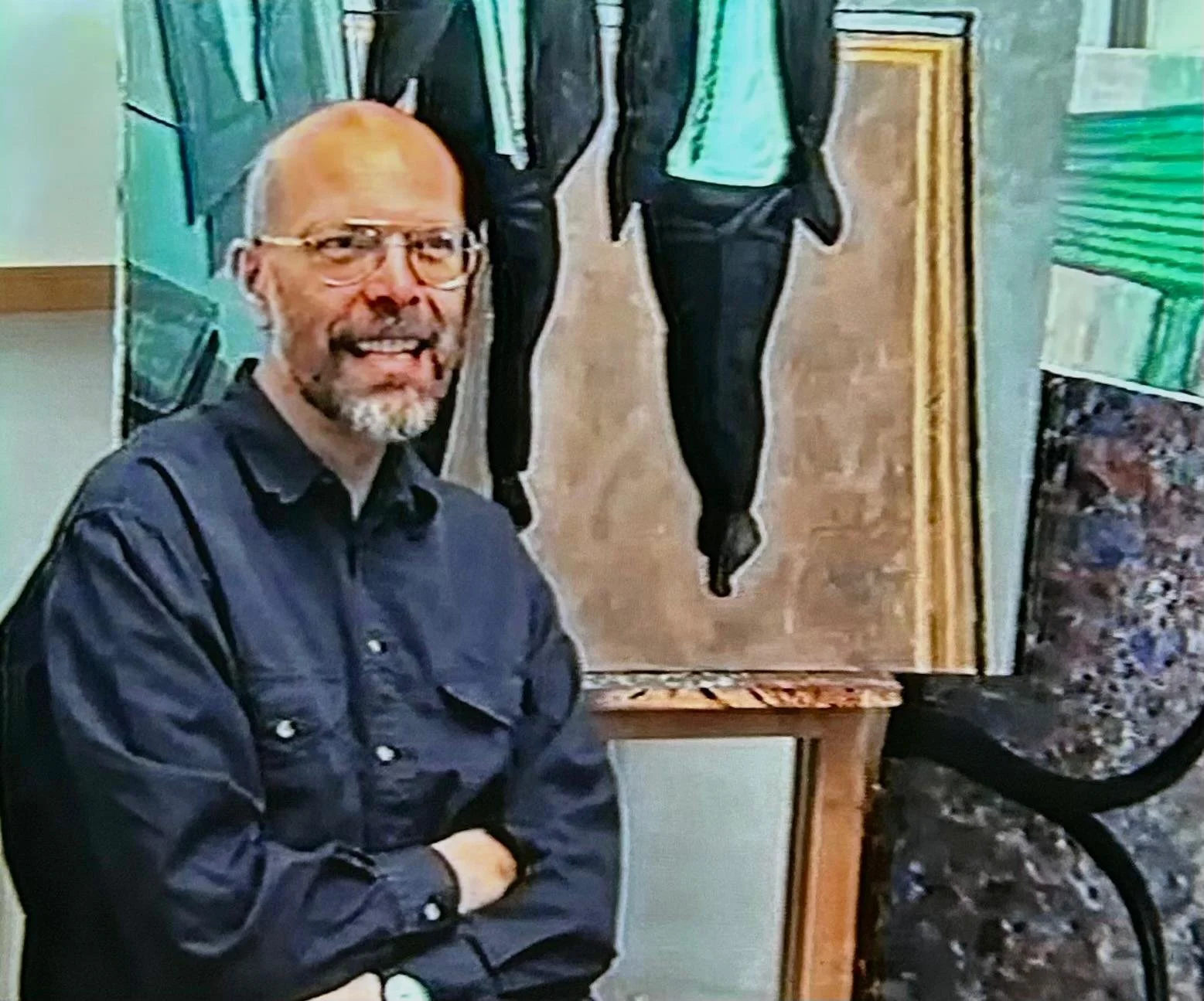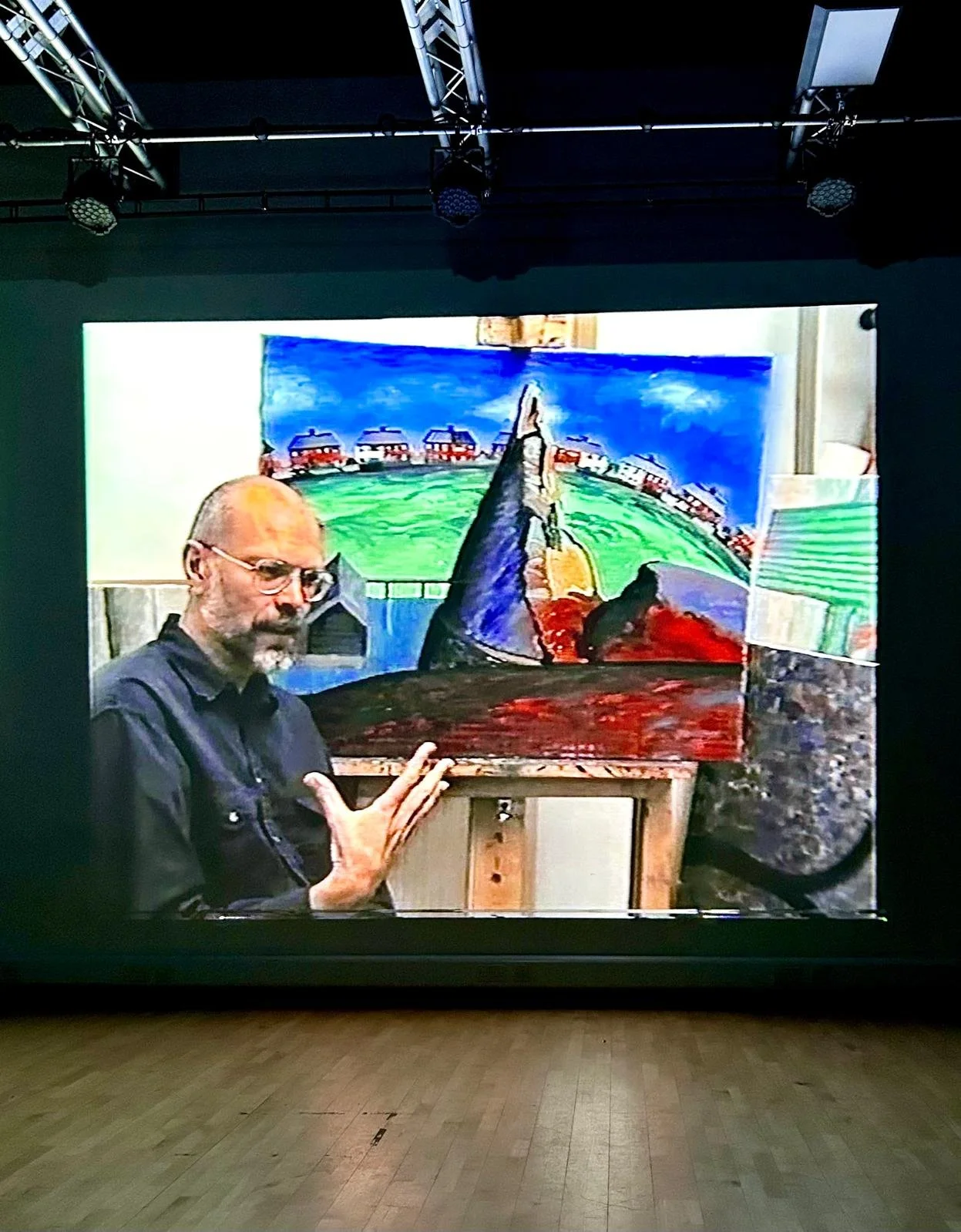Event date: 14 October 2025
Review by Danusia Wurm
Right to left: Oliver Creed, Mike Chapman, former ncas Chair Keith Roberts and David Jones
Echoing the 2024 ncas exhibition, Post War: People and Place, that showcased the work of Robert Fox and Leslie Davenport, the evening at Norwich School’s Blake Studio was another brilliant time-capsule, this time transporting us back 35 years to the early 1990s.
Pre-dating a period marked by the rise of youth and popular culture and a shift towards individualism, we witness three artists beautifully captured in Mike Toll’s superb cinematic portraits “just being themselves.” Even better, all three artists were present to witness their honest, unselfconscious, younger selves to the delight of an enthusiastic ncas and Norwich 20 Group audience.
Eloquently introduced by former ncas chair Keith Roberts (whose excellent notes I have unashamedly plundered) the films were made in1989 and 1990 in VHS format. They were transcribed to a more user-friendly digital format by ncas and the Norwich Twenty Group in 2018. All the films have now been deposited through Dr Nick Warr in the East Anglian Film Archive.
On the films themselves, Keith wryly comments, “Even after only 35 years the films do seem curiously dated…. - it’s hard to pin down why, but even their voices seem to be from a slightly different era - but their key interest is the tight focus that Mike Toll brings to the artist’s materials and methods, about how artists in practice make their stuff”.
Mike Chapman in his studio at St Ethelreda’s
“An artist is not joined to his work. The work has its own integrity and life”
Mike Chapman: Thinking With My Hands
Thinking With My Hands, was made in 1989 and follows Mike through the priest’s door and into his studio in the round-towered, St Etheldreda’s artist’s church in King Street. Keith comments: After some great drawings, and he really can draw, he goes on to describe in detail his approach to 3D and to 2D work, a distinction he rejects. In the film, Mike categorically states “I’m not a sculptor or a painter.”
He goes on to describe his huge appreciation of Van Gogh’s strong, ‘real’ paintings and drawings; Picasso’s sense of ‘fun and abundant inventiveness’; Rodin’s sculptural fluidity and Russian constructivist Tatlin who used new experimental materials such as zinc. To Mike ‘excitement and inquiry’ in the practice of art are very important.
A modest man, but a real artist, Mike continues to follow his ‘Constructivist’ line of enquiry in 3D and 2D art today.
Oliver Creed
“Sculpture is a form that describes itself”
In this film from 1990, Oliver is three years out of art school as a mature student and looking young and dapper. He talks confidently about his Contact Gallery show, Working an Edge. He covers his earlier work as a boatyard welder before talking in detail about the various considerations he takes before making a work, mostly with cement or plaster but all with a strong emphasis on structure with a capital “S”.
He is particularly concerned with how a sculpture exists “outside of itself”; how it connects with another 3D form “stripping away associations to make the object its own thing”. A quintessential object maker and modeller, for the last decade, Oliver has been working exclusively in ceramic stoneware which still maintains its strong architectural flavour.
David Jones
“I paint the world immediately around me - from what’s about”
The film David Jones covers a lot of ground. Drawings and paintings and prints, but all with a clear central preoccupation with the real world around him, whether it is friends and family, mannequins in a shop window, the urban landscape, allotments, scrapped cars, castles, canals or street plans. David explains “Much of my work is about history. What interests me is how we can see evidence of the past around us.
In terms of carrying out the work, drawing is an essential basis together with a strong pictorial style. He is constantly looking for balance. He says, “A painting has to have its own discreet arrangement.”
Colour is also very important. He says, “Colour resonates to create atmosphere like notes or chords in music.” Influenced by, but not “explicitly following” artists including Braque, Matisse, Bonnard and Derain, he continues to be a serious observer of where and how we live.
In all, it was a wonderfully evocative and uplifting evening, which not only explored the aspirations and practices of three wonderful artists but also shone a light on the fascinating social history of the early 1990s.
We remain forever indebted to Mike Toll.
ncas would also like to thank Norwich 20 Group for their enthusiastic partnering in this event and Norwich School for their excellent hosting.

